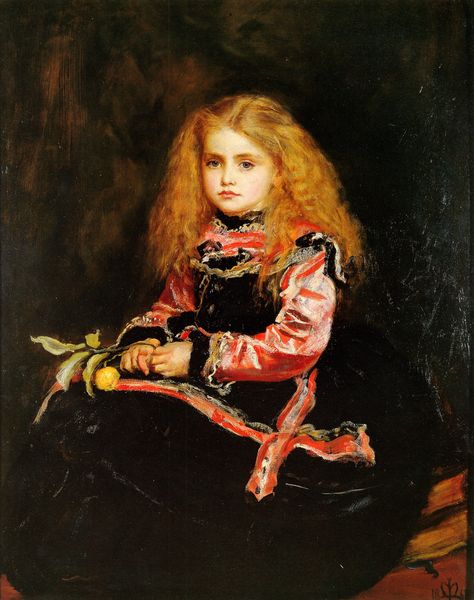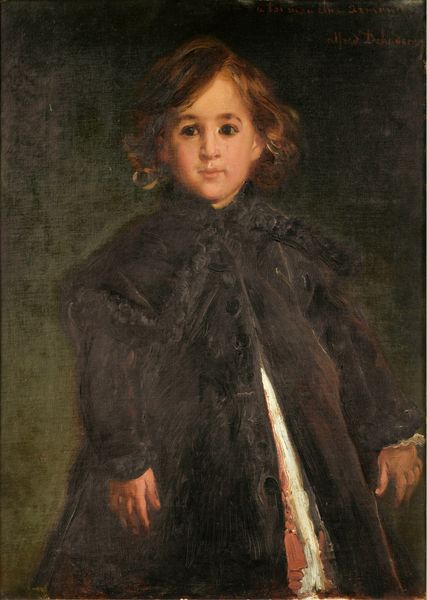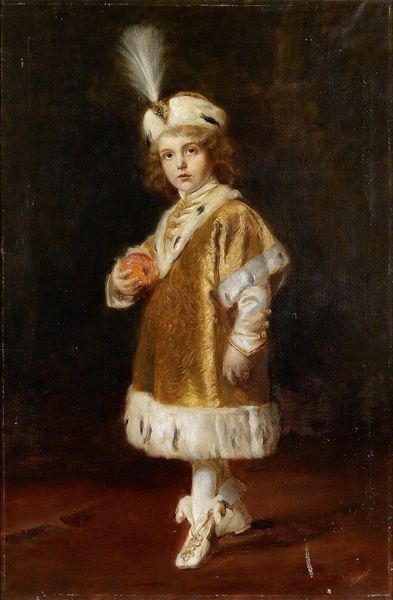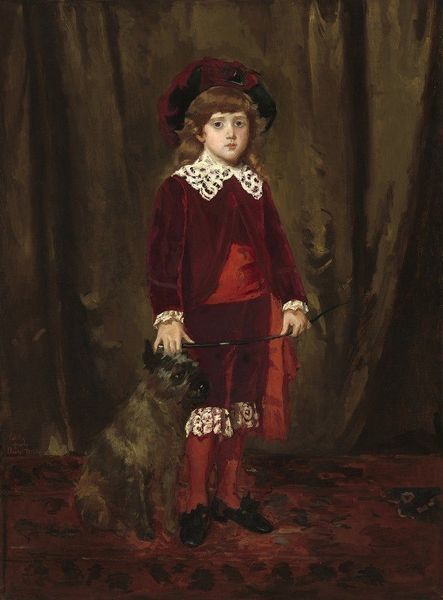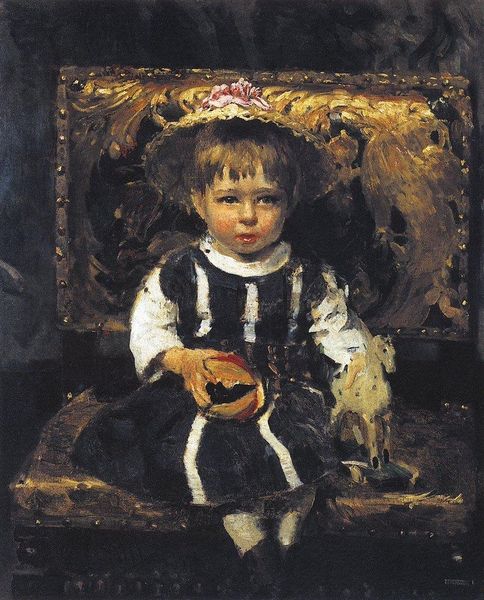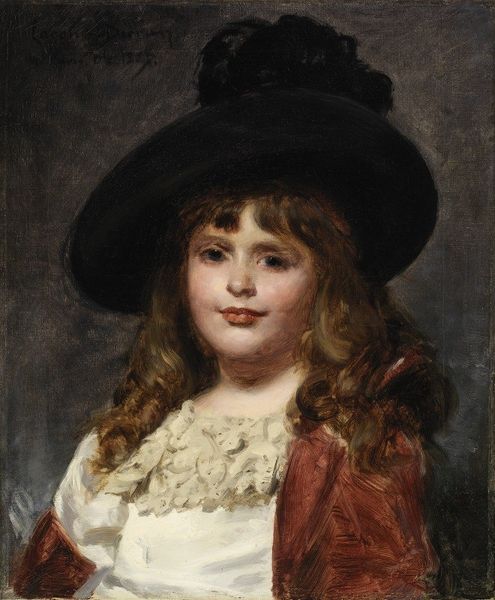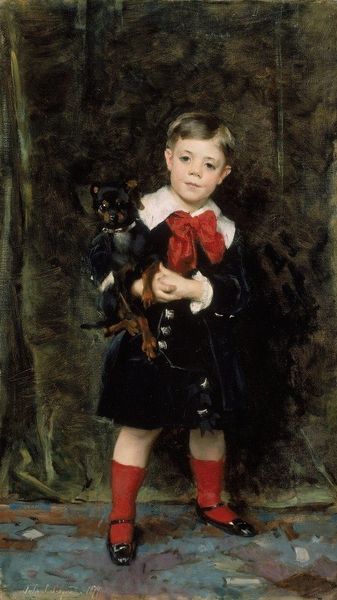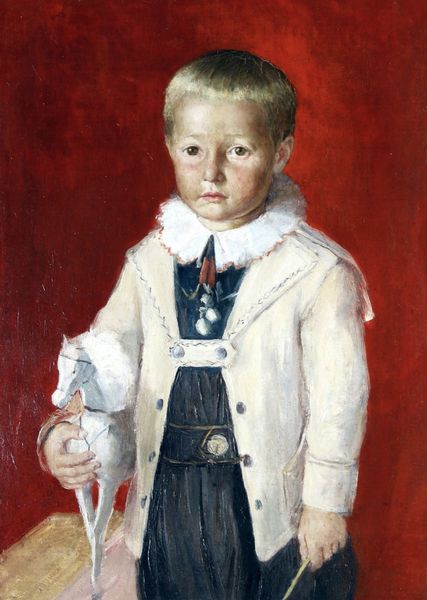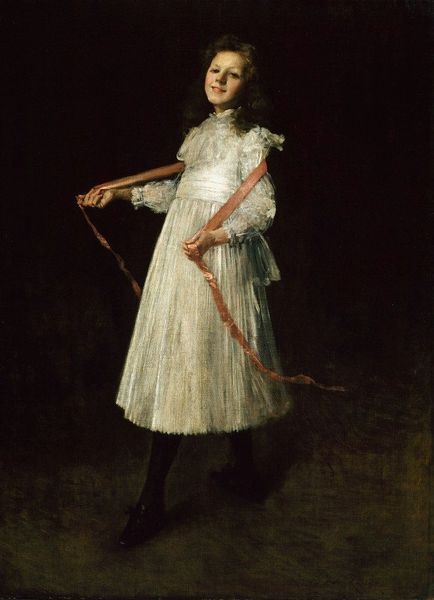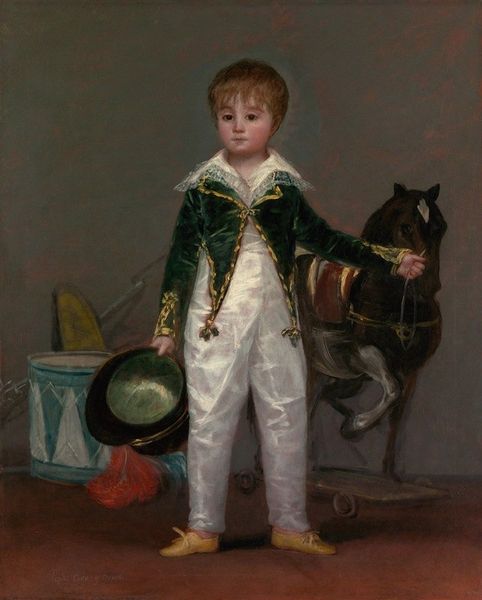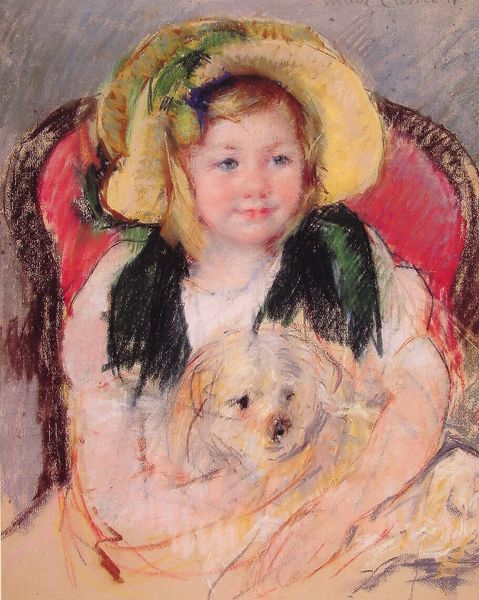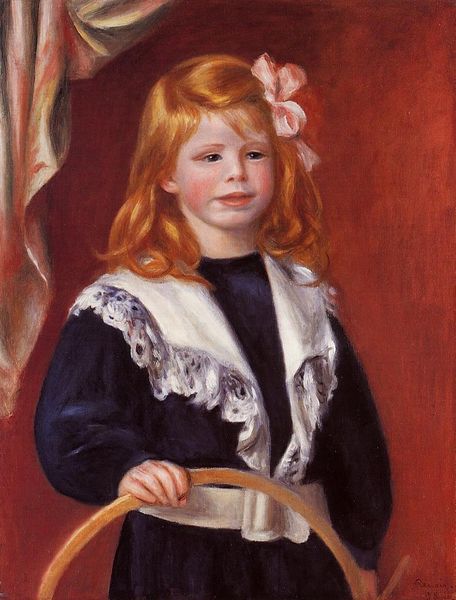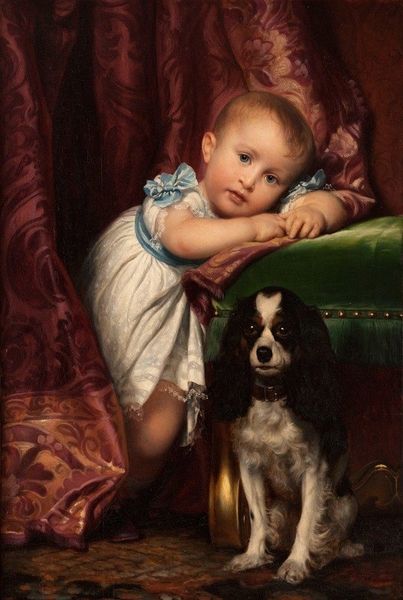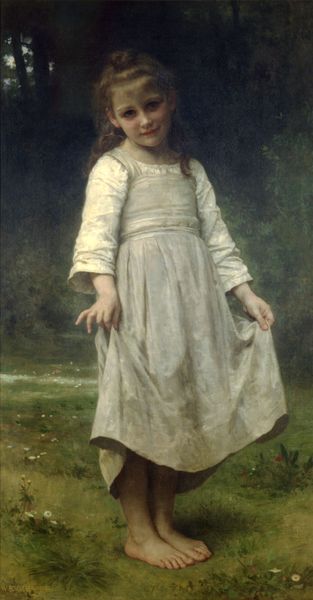
Copyright: Public domain
Curator: Standing before us is William Merritt Chase's "Portrait of James Rapelje Howell," an oil painting from 1886. Editor: Immediately, I'm struck by the texture. The way the oil paint seems roughly applied, almost unfinished in parts, creates a palpable sense of materiality. It’s not just depicting a scene; it's highlighting the act of painting. Curator: Precisely. Note how Chase uses broken color and loose brushwork, hallmarks of Impressionism. The composition leads the eye, creating a dialogue between subject and ground. The light catches the boy’s golden hair and the dog's fur. Editor: I wonder about the manufacturing of the pigments and the canvas support. How did the availability and cost of these materials shape Chase’s artistic choices? Was the choice to depict Howell and the dog outdoors to showcase them and his craft to a different audience? Curator: The choice of landscape, particularly the indeterminate space in the background, is more than just scenery. It provides a structured context, focusing attention on the young James. It's a study in form. Editor: For me, it evokes the labor conditions surrounding portraiture. This wasn't about a simple image; it represents the sitting process. Consider the expense associated with this form of artistic commission in the 1880s—Chase isn’t just rendering; he is also showcasing a certain lifestyle and economy of artistic production and labor. Curator: It transcends pure representation, inviting interpretation through its use of light, line, and color. Editor: And underscores art's role within class structures, illuminating how access to art remains intrinsically tied to labor. Seeing the context opens new perspectives. Curator: Agreed.
Comments
No comments
Be the first to comment and join the conversation on the ultimate creative platform.
